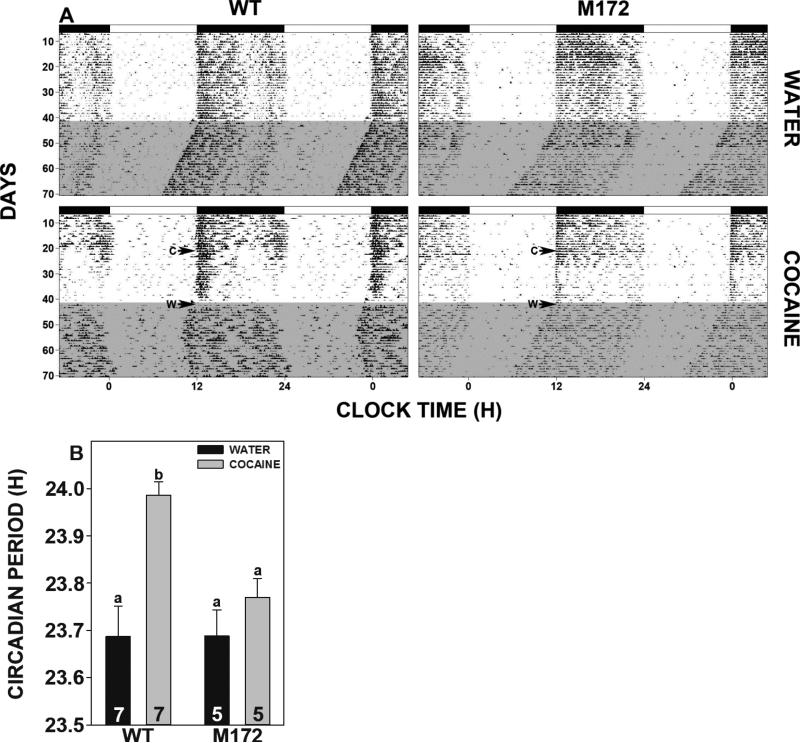Figure 1.
Effects of SERT Met172 mutation and chronic cocaine on circadian rhythms. A. Representative double-plotted actograms of general locomotor activity of wild-type (WT; left panels) and SERT Met172 mutant mice (right panels) receiving water alone (top panels) or chronic forced oral cocaine (0.5 mg/ml) for 3 wk (bottom panels). Onset and withdrawal from cocaine are designated by “C” and “W”, respectively. Shading represents release to DD. Overhead filled horizontal bars represent the dark phase of the LD cycle. B. Histogram representation (means ± SEM) of behavioral rhythm data showing the cocaine-induced shortening of the free-running circadian period in wild-type mice that is not exhibited by the SERT Met172 mutants. Bars with different letters are significantly different (p<0.05). Numbers in bars are N's per group.

